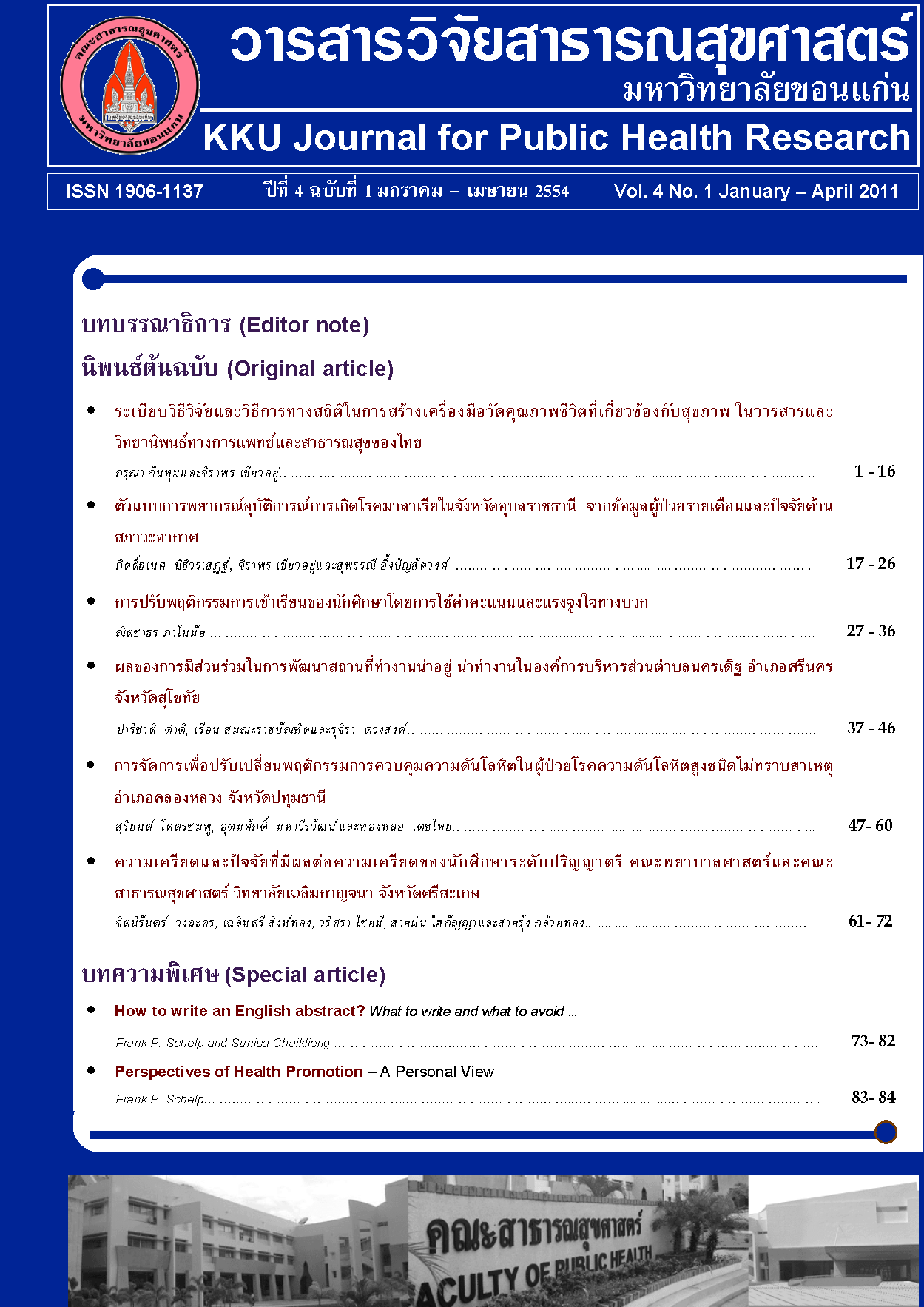Modeling Malaria Incidence in Ubonratchatani Province Using Monthly Case Reports and Weather Conditions
Keywords:
forecasting, malaria incidence, negative binomial regression modelAbstract
This study aimed to determine the best model for forecasting malaria incidence in the Ubonratchatani
province. A comparison between the generalized linear models (GLM) Poisson regression and the Box-
Jenkins techniques was considered. For the Poisson regression, the number of incidences of malaria cases
was taken as the response variable and weather records were used as predictors. The incidence rate per
100,000 population was used for the Box and Jenkins technique. In developing the model, a data size of 108
was used, whereas a data size of 12 was used for the validation.
GLM Negative binomial regression was superior to the GLM Poisson regression because of an
overdispersion problem. Time and maximum temperature were predictors in the GLM Negative binomial
regression. In the model development, the MAD, MSE, and MAPE of the GLM Negative binomial regression
were 12.33, 288.53, and 24.46 respectively. In the validation, MAD, MSE, and MAPE were 19.04, 558.22, and
33.46 respectively. The best model from the Box and Jenkins technique was ARIMA (1,0,0). In the model
development, MAD, MSE, and MAPE of ARIMA (1,0,0) were 23.28, 1179.30, and 38.33 respectively. For the
validating step MAD, MSE, and MAPE of ARIMA (1,0,0) were 19.45, 590.09, and 53.00 respectively.
In conclusion, GLM Negative binomial regression was the best forecasting model of malaria incidence
for the Ubonratchatani province because of the lowest error and because it needs only one weather predictor,
maximum temperature, which can be easily obtained.


